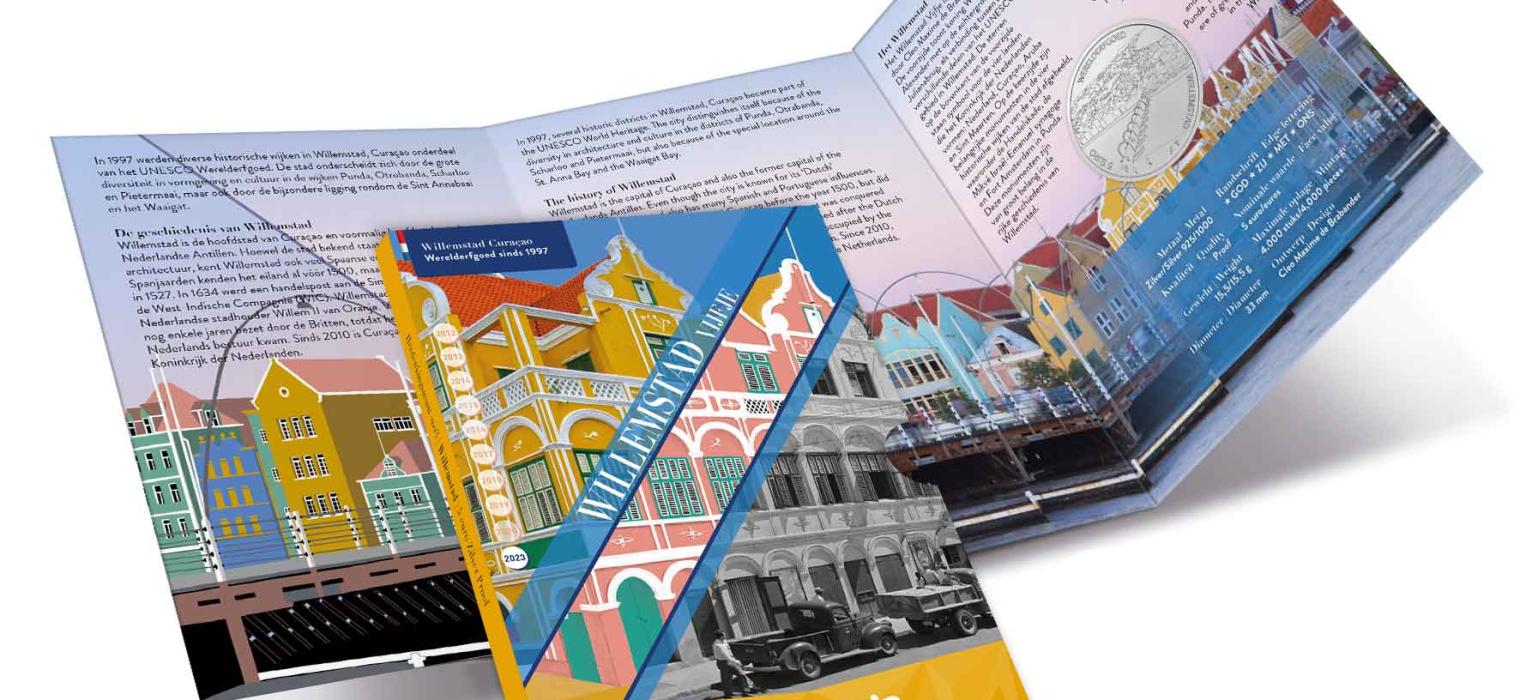
Every year, since 2012, special commemorative coins have been issued celebrating Dutch World Heritage. The Kingdom of the Netherlands currently has ten UNESCO world heritage listings, of which the Royal Dutch Mint has immortalized eight of them on a commemorative coin, so far.
Of every commemorative coin, there are several collectible qualities of each coin, like Silver Proof and Gold Proof. The Dutch commemorative coin is legal tender with a nominal value of 5 euro’s. The gold commemorative coin even has a value of 10 euro’s and is often called the ‘Golden Tenner’.
The first three years, Tine Melzer designed the obverse and reverse of these coins. In 2012, it was the Grachtengordel 5 euro coin. In 2013, the coin was based on the Rietveld Schröderhuis: this issue was extra special, because it was King Willem-Alexander’s first official 5 euro commemorative coin. In September of 2014 the third coin was issued in the Dutch World Heritage series: the Molen 5 euro coin. The Van Nelle 5 euro coin was the fourth coin and was issued in 2015. This coin was designed by Kianoosh Motallebi, who also designed the following fifth and sixth coin. On May 17, 2016, the Wadden 5 euro coin was revealed and in November of 2017 it was time for the Stelling van Amsterdam 5 euro coin. In 2018 and 2019 the Dutch World Heritage series were designed by Katrin Korfmann: the Schokland 5 euro coin (2018) and the Beemster 5 euro coin (2019).
The most recent commemorative coin in the Dutch World Heritage series (2020) is designed by visual artist Berend Strik. He designed the Woudagemaal 5 Euro Coin. The 5 euro commemorative coin is honouring the 100th anniversary of the Ir. D.F. Woudagemaal and is a UNESCO World Heritage Site. It is also the first commemorative coin which depicts King Willem-Alexander with his beard. The Woudagemaal 5 Euro Coin is therefore highly wanted and is a memorable coin in Dutch coin history. Read more about Berend Strik and the design of the Woudagemaal 5 Euro Coin.

Source/Picture: the Royal Dutch Mint